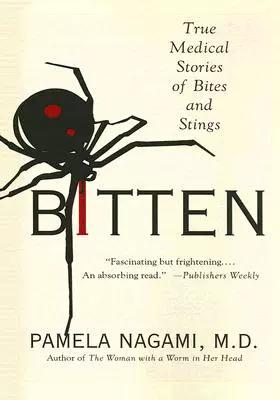
Bites and Stings: A Comprehensive Guide
Have you ever found yourself in a situation where a bite or a sting left you in pain and confusion? Bites and stings are common occurrences that can range from mild to severe, and it’s important to understand how to handle them effectively. In this article, we will delve into the various types of bites and stings, their symptoms, and the best ways to treat them.
Types of Bites and Stings
Bites and stings can come from a variety of sources, including insects, animals, and even plants. Here are some of the most common types:

| Type | Source | Common Symptoms |
|---|---|---|
| Insect Bites | Bees, ants, mosquitoes, ticks | Pain, redness, swelling, itching |
| Animal Bites | Dogs, cats, snakes, bats | Pain, bleeding, swelling, infection risk |
| Plant Stings | Poison ivy, poison oak, nettles | Pain, redness, swelling, itching, blisters |
Insect bites are often the most common, with bees and ants being the most notorious. Animal bites can be more serious, especially if the animal is known to carry diseases. Plant stings, on the other hand, can cause intense itching and discomfort, and in some cases, severe allergic reactions.
Identifying Symptoms
Recognizing the symptoms of a bite or sting is crucial in determining the appropriate treatment. Here are some common symptoms to look out for:
-
Pain or throbbing at the site of the bite or sting
-
Redness, swelling, and warmth around the area

-
Itching, especially in the case of insect bites
-
Blisters or pus, which may indicate infection
-
Difficulty breathing, swelling of the throat, or hives, which may indicate an allergic reaction
It’s important to note that some individuals may have severe allergic reactions to certain bites and stings, which can be life-threatening. If you or someone you know experiences symptoms such as difficulty breathing, swelling of the throat, or hives, seek medical attention immediately.
First Aid for Bites and Stings
When dealing with a bite or sting, it’s essential to follow proper first aid procedures to minimize pain and prevent infection. Here are some steps to take:
-
Remove the stinger: For insect stings, gently scrape the stinger out with a credit card or your fingernail, being careful not to squeeze the venom sac.
-
Clean the wound: Wash the area with soap and water to prevent infection.
-
Apply ice: Place a cold compress or ice pack on the bite or sting to reduce swelling and pain.
-
Take an antihistamine: Over-the-counter antihistamines can help relieve itching and swelling.
-
Use a pain reliever: Over-the-counter pain relievers, such as ibuprofen or acetaminophen, can help manage pain.
Remember, if you’re unsure about the cause of the bite or sting, or if the symptoms are severe, it’s always best to seek medical attention.
Preventing Future Bites and Stings
While it’s impossible to avoid all bites and stings, there are steps you can take to minimize your risk:
-
Wear protective clothing when hiking or working in areas with insects or plants known to cause bites and stings.
-
Use insect repellent when outdoors, especially in areas with high insect activity.
-
Keep your home and yard free of pests that may bite or sting, such as mosquitoes or ants.







